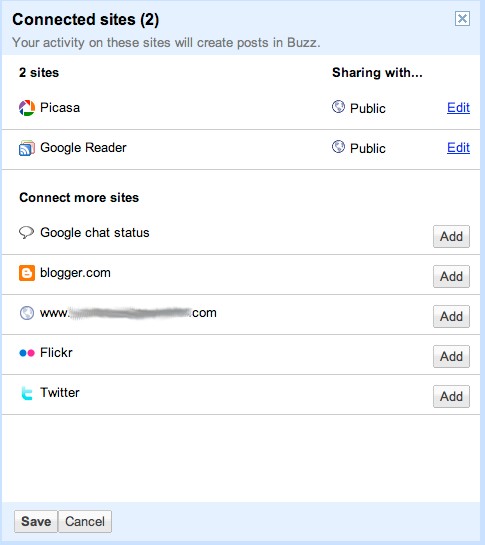Google Buzz is the latest update from Google. Went live yesterday, looks to be Google’s effort to break into the social media market. I personally tried it out a bit, it ties directly to Gmail.
It does do updates regularly, and appears to share the information with anyone who follows you. A lot of people have commented that it looks to be an imitation of Twitter. The nice thing is that you can connect to other sites, to reduce all the different social machines that need maintenance.
The default for me was to activate sharing with Picasa and Google Reader (I didn’t select either of these). The other options available are visible in the image above. The blurred domain is a site I set up on BlogSpot/Blogger through the same account. With Twitter, it will read your Tweets, but from what I can tell it only reads to Buzz, not vice versa.
Looks like Google’s still ironing out the kinks on this, I’m sure plenty of people will be giving feedback for it. For now I find it nice since I don’t have the mass of content that is dealt out on Twitter, and so far it appears to still stay within actual social connections (and hasn’t spread into the marketing machine yet). So every “buzz” I’ve gotten so far has been from a friend, making an actual comment on life instead of a business telling me how good their merchandise is.
I don’t know if it’s automatic for all Gmail users, but from the amount of people I’ve seen pop on with it, I’m guessing it is. It’s just another option underneath the Inbox, and it will show updates for some “buzz”es (but not all) within the Inbox. It appears it will post the updates for anything you have contributed to to your Inbox, with the little Buzz logo next to it.
We’ll see if it’s something that gets used a lot or not, should be able to tell within a few weeks how well it’ll work.




